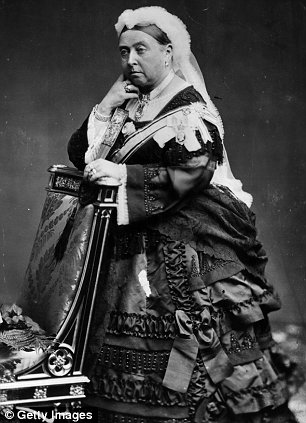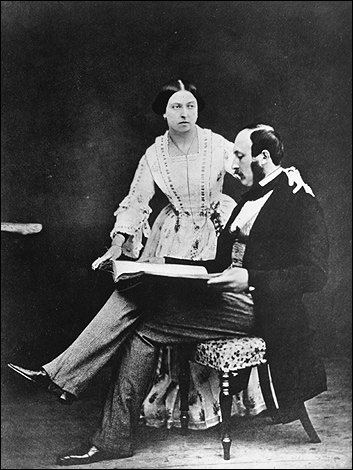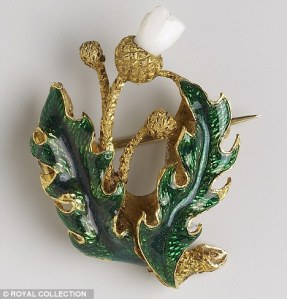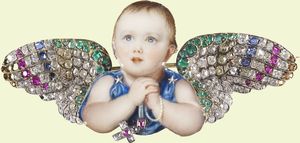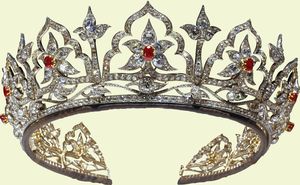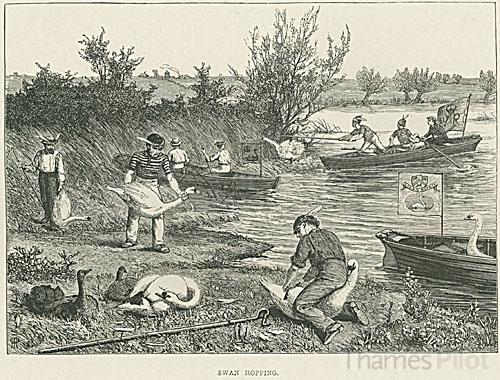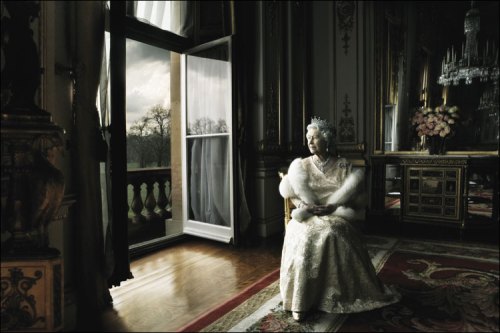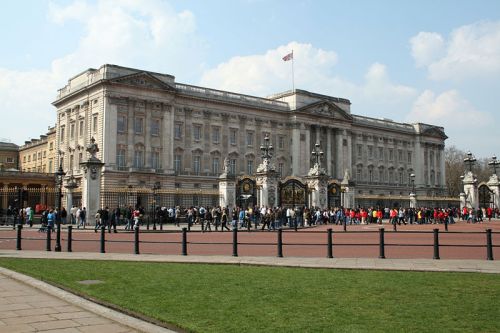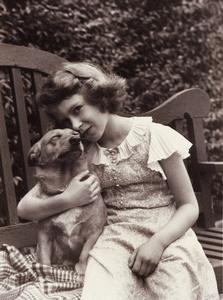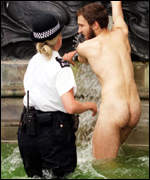
At a 1968 British society wedding in Kent, Hollywood legend Elizabeth Taylor cannot resist snapping a souvenir picture of "the Queen Mum" (seated), mother of Queen Elizabeth II.
“The Queen Mum,” born Elizabeth Bowes-Lyon (1900-2002), was the beloved British Royal Family matriarch from 1953 until her death at age 101. Of Scottish birth, she served as Queen consort to her husband King George VI from 1936 until his death in 1952, when their daughter Princess Elizabeth took the throne as Elizabeth II.
During the London Blitz in WWII, the Queen Mum – who was then naturally referred to as Queen Elizabeth – insisted that she and the King remain in Buckingham Palace after it was bombed by the German luftwaffe. The Queen remarked to her mother-in-law that she was more affected by the bombing of the East End of London than by the bombing of the Palace:
“I’m glad we have been bombed,” she said. “Now, I can look the East End in the eye.” (1)

British King George VI and his wife Queen Elizabeth (later Elizabeth, the Queen Mother) survey the damage to Buckingham Palace from German bombs. Both the King and Queen were in the Palace when the attack hit the palace grounds and chapel on the morning of September 13, 1940. As they made their way to the palace shelter, they felt the Palace shake under the assault of high explosive and incendiary bombs. They were unhurt. Undeterred by the danger, the royal couple vowed to stay in London in the Palace.
“I am still just as frightened of bombs as I was at the beginning,” the Queen wrote to a favourite niece. “I turn bright red and my heart hammers….I’m a beastly coward but I do believe that a lot people are, so I don’t mind! Well, darling, I must stop. Tinkety tonk old fruit and down with the Nazis.”(2)
Her indomitable spirit in the face of German aggression boosted British morale to such a degree that Adolf Hitler called her “the most dangerous woman in Europe.”
Her scary skinny sister-in-law, Wallis, the Duchess of Windsor, hated and mocked her, calling her by the unflattering nickname “Cookie” behind her back, mocking her love of sweets and resulting plumpness. The Queen Mum, however, did not hide her love of fun, jokes, champagne, and good food. In the 2010 movie, “The King’s Speech,” the Queen Mum, played by Helena Bonham Carter, is shown eating candies in the backseat of a car.
Her ultimate accolade for anyone or anything was “delicious.”(2)
A new book by British monarchy chronicler, Brian Hoey, gives us yet another “behind the palace walls” glimpse of the Queen Mum enjoying her sweets. Not in Front of the Corgis, scheduled for a June 2012 release, relates this anecdote:
Lord Callaghan, when he was prime minister (1976-1979), was a frequent guest of the Queen Mother’s at Clarence House. Once, when just the two of them were present, she was eating from an enormous box of chocolates when he arrived. She asked him if he would like one. He said, “Yes.” She then pointed to one in the middle of the box and said, “Have that one.” During the time he was eating his one specified chocolate, she ate three more.
She then invited him to take another, once again selecting the one he should have. This went on for the remainder of the morning, with Her Majesty always pointing to the ones he could have.
As Callaghan left, he spoke to The Queen’s Page, asking why he was offered only particular chocolates by the Queen. The Page let him in on the secret:
“Those are the ones with hard centers. Her Majesty only eats the chocolates with soft centers.”(3)
(1) Source: BBC
(2) Source: The Daily Beast
(3) Source: The Daily Beast
Faithful readers:












